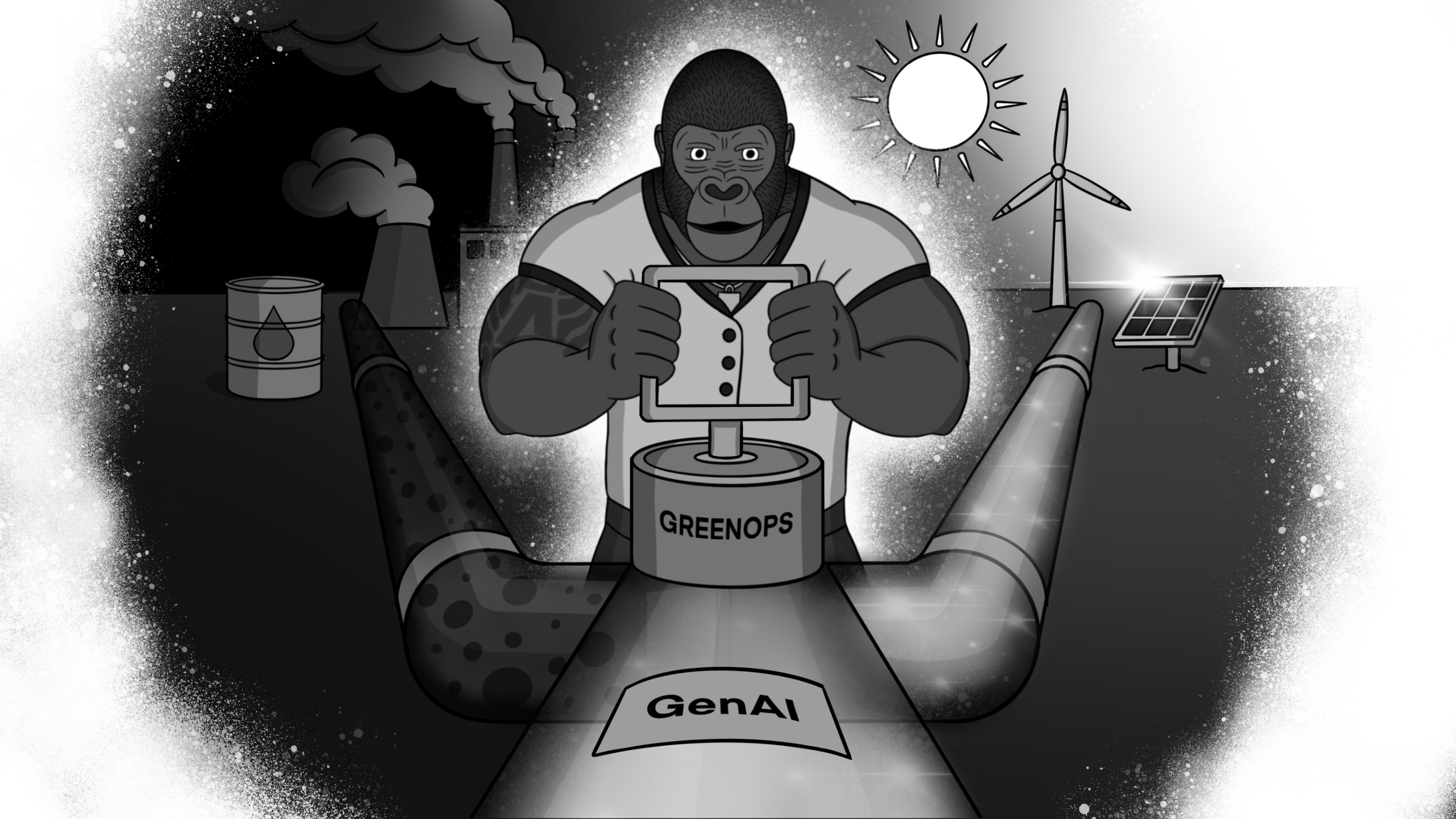It’s easy to sit smugly on the terrace of your Airbnb in the Swiss mountains, remote coding your next GenAI application while breathing the fresh air and enjoying the view of the glaciers. You’re changing the world, improving lives…making a difference! Not like “old industry.” Imagine living and working in, say, Ruhrpott at a steel factory with tonnes of noxious emissions pumping out into the atmosphere through those red and white chimneys. No siree - not me!
But are those soft-skinned coding hands of yours really as clean as you think? Short answer: No.
It’s easy to point out an industry that is inherently dirty. Steel production accounts for 8% of the world’s final energy demand and 7% of its greenhouse gas (GHG) emissions [1]. While that sounds like a lot, this sector has made significant improvements, resulting in its energy needs dropping by 60% since the 1960s[2].
Up, up, up on energy use
By comparison, the very young IT sector seems to know no bounds when it comes to growth in energy consumption. Every year, more and more data centers are added to absorb the growing demand for processing, storage, and, increasingly, AI.
The International Energy Agency (IEA) states that data centers currently consume between 2% and 3% of the world’s electricity[3] - that’s around 460 TWh[4]. And the outlook is bleak. The IEA predicts that electricity consumption will double to around 1,000 TWh (Japan’s current electricity consumption) by 2030, driven primarily by the hardware needed for AI adoption[5].
And this just models the base case - it could be even worse. Depending on the energy sources used to generate that electricity, this could result in even more GHG emissions. And the impact is broader than just energy, extending to resources such as the water used to cool data centers[6].

Introducing GreenOps
Like anything, if you’re not aware of it, you won’t know what to change to improve it. Hence why a new IT discipline, GreenOps, has appeared. It works similarly to FinOps, which is where systems are put in place to monitor the operating costs of data center operations. This enables everyone, from high-level operations to individual teams, to achieve cost optimizations by reducing storage needs or shutting down servers when not in use. But with GreenOps, the organization focuses on GHG emissions instead of dollars and Euros.
While this seems like an administrative nightmare (it is) dreamed up by bureaucrats in Brussels (yes, they are involved), it has become something we can’t ignore.
Part of the European Energy Efficiency Directive, there is a Data Centers Reporting Program [7] that focuses on sustainability improvements, just like those being implemented in heavy industry. The Corporate Sustainability Reporting Directive (CSRD) is also pushing this forward, which requires large EU companies to disclose their environmental impact alongside their 2024 financial year data.
Figuring out your emissions
One of the challenges is determining what your GHG emissions actually are. According to the GHG Protocol, emissions are categorized into three scopes, which prevents double-counting and helps when formulating action plans to implement improvements.
The three scopes are:
- Scope 1 - Direct emissions: This covers emissions from sources that a business owns or controls. In manufacturing, such as steel production, this is relatively simple to determine. For a data center, it is likely to just be company cars using fossil fuels or any diesel generators used for electricity supply backup.
- Scope 2 - Indirect energy emissions: Every business needs energy in the form of electricity, heat, steam, or cooling. This scope covers the emissions generated in their production. For example, you could score well here by buying electricity from renewable sources.
- Scope 3 - Other indirect emissions: This category gets tricky, as it encompasses emissions from the manufacture of servers, network equipment, and cooling equipment, among other items. According to Synyega, businesses like Microsoft and Google have found that 90% of their emissions fall into this scope[8]. The issue here is that scope 3 data is challenging to acquire. You need to ask your server supplier, and they use many components from third parties whose scope 3 emissions are also unclear. The issue extends into the entire supply chain, right back to the extraction of minerals and processing of other raw materials.

Currently, reporting on scope 3 emissions is optional. However, as businesses become more aware of their responsibilities in this space and the necessary data is collected, it’s clear that it will eventually become mandatory, especially since it makes up an overwhelming portion of the emissions of many non-manufacturing businesses.
Implementing GreenOps
So, since you’re being forced into gathering and reporting your sustainability data, you may as well make it easy to implement and the learnings actionable. As you’d expect, the open-source community has been working on a few solutions:
- Cloud Jewels: Etsy, the well-known marketplace for homemade and unique items, developed a script to estimate the intensity of its energy usage, and could form a good starting point for your GreenOps efforts. It is available on GitHub[9] and is described in a short article. [10]
- Cloud Carbon Footprint (CCF): Maintained by the GreenOps team at Thoughtworks, CCF is an in-house tool. It converts cloud utilization into estimated energy consumption and carbon emissions, and has support for cloud providers such as AWS, Google Cloud, and Microsoft Azure. [11]
- Code Carbon: Developed by Sasha Luccioni and a research team at Hugging Face, this lightweight tool is delivered as a Python pip package. It uses location data to calculate emissions correctly and outputs its results in an integrated dashboard. [12]
With the growth in data centers and the explosion of GenAI use, which can demand 33 times more energy than machines running task-specific software, it’s clear that we can’t simply ignore our industry’s environmental impact. However, like doing your own taxes, determining and adding up all your GHG emissions isn’t much fun. Thankfully, there are tools available that help with implementing GreenOps, which not only make the process simpler, but they will also enable you to improve the sustainability and green credentials of your business.
If GreenOps is now on your radar, but you’re short of the resources to implement it, why not reach out to the team at ape factory. It’s just the sort of task we can take off your hands so that you can concentrate on the day-to-day tasks that pay the bills. If you want to learn more, just get in touch - we’ll be happy to help!
-----
[1] https://www.iea.org/reports/iron-and-steel-technology-roadmap
[2] https://worldsteel.org/wp-content/uploads/Fact-sheet-Energy-use-in-the-steel-industry.pdf
[4] https://www.bbc.com/news/articles/cj5ll89dy2mo
[5] https://www.iea.org/reports/energy-and-ai/energy-demand-from-ai
[6] https://news.mit.edu/2025/explained-generative-ai-environmental-impact-0117
[8] https://www.synyega.com/insights/greenops-101
[9] https://github.com/etsy/cloud-jewels
[10] https://www.etsy.com/codeascraft/cloud-jewels-estimating-kwh-in-the-cloud
[11] https://www.cloudcarbonfootprint.org/




.png)
.png)


